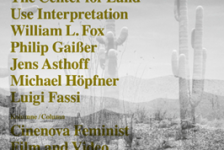For the 56th Venice Biennale, Okwui Enwezor concentrates on the legacy of the human condition, focusing on the last century of its turmoil-oriented, violence-driven recount of social and political events. Producing parallels between the history and socio-political formation of the Venice Biennale and marking its trajectory of 120 years, Enwezor states that: “Since its first edition in 1895, the visual art exhibition of la Biennale di Venezia has existed at the confluence of many socio-political changes and radical historical ruptures across the fields of art, culture, politics, technology, and economics.”1 Enlivening the spirit of the Venice Biennale and pronouncing its social and political engagement with the goings-on of the world-at-large, Enwezor constructs an exhibition of 139 artists hailing from fifty-three countries; almost ninety of these artists are participating in the biennale for the first time.
To read further: Camera Austria, Issue 130

